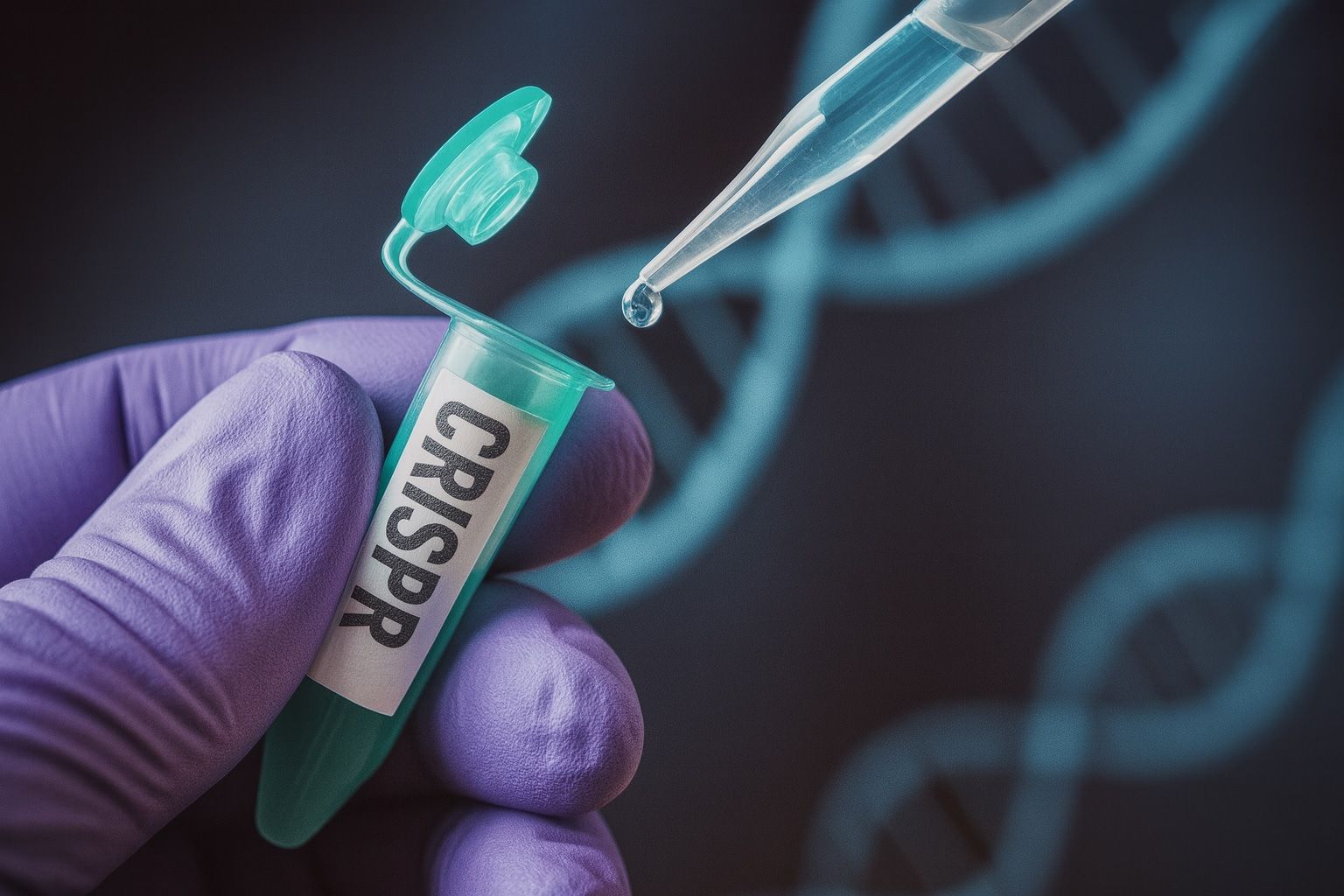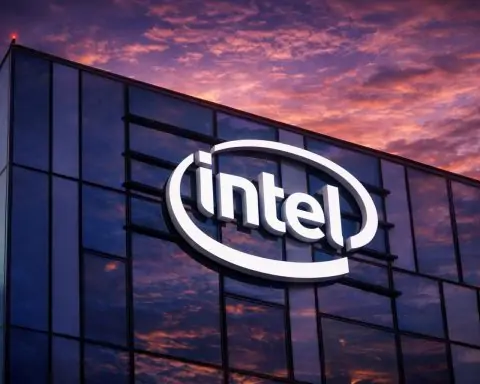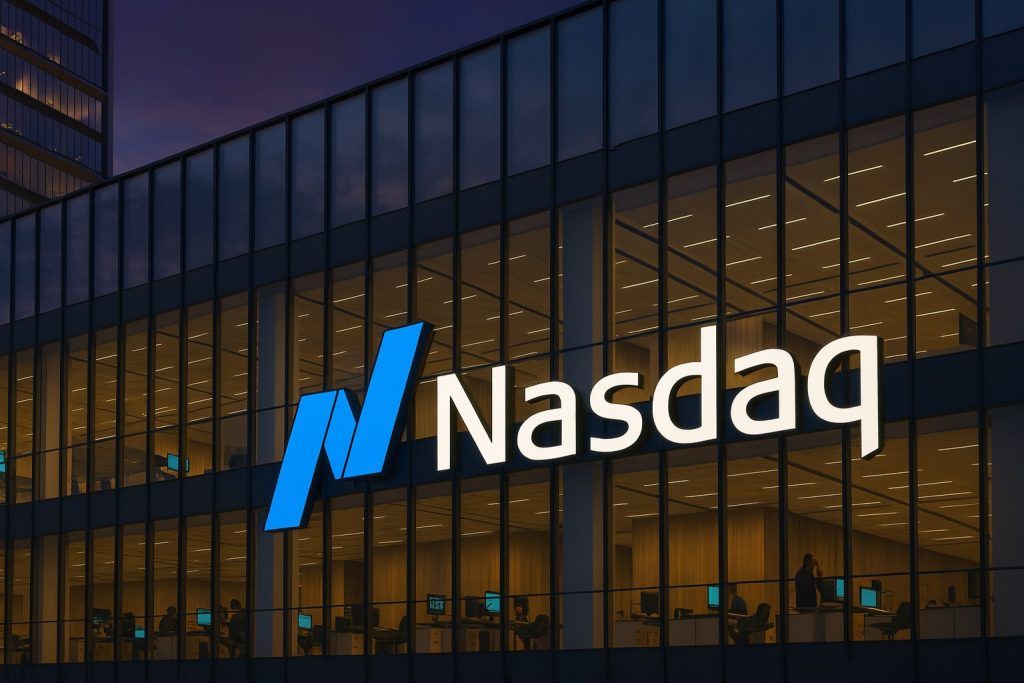- CRSP stock price volatility: CRISPR Therapeutics (NASDAQ: CRSP) traded around $67 per share on Monday, Oct. 27, 2025, down about 3% as gene-editing stocks slid on safety news [1]. Despite today’s dip, CRSP has nearly doubled in 2025, vastly outperforming biotech indexes [2].
- New breakthroughs fuel rally: The company unveiled a gene-editing breakthrough this month, correcting a disease-causing mutation in >90% of liver cells in preclinical tests [3]. Its first CRISPR-based therapy, Casgevy, won approval for sickle cell disease and is rolling out globally [4].
- Analysts bullish on upside: Wall Street remains optimistic – 10 analysts rate CRSP a Buy with an average 12-month target around $73–$82 (≈20% above current) [5] [6]. Bank of America recently raised its target to $93 and reiterated a Buy rating [7].
- Competitors & sector risks: Rival Intellia Therapeutics paused two CRISPR trials after a serious side effect, sending its stock plunging ~45% and sparking broader safety fears [8]. CRSP shares also slipped ~10% in sympathy, a stark reminder of gene-editing’s risks. Meanwhile, smaller peer Editas Medicine has surged nearly 200% in six months on promising data [9].
- Market outlook: With Q3 earnings due imminently, investors await updates on cash burn and FDA progress. Institutions own ~69% of CRSP stock [10], reflecting strong backing, but short interest near 26% signals skeptics betting against the company [11]. CRSP’s $600 million share offering plan [12] highlights the need to fund R&D, even at the cost of dilution [13].
Stock Price Rollercoaster in 2025
CRISPR Therapeutics’ stock has been on a wild ride this year. As of midday October 27, CRSP hovered around $67 per share – off its highs but still up dramatically from early 2025 levels [14]. Over the past six months, the stock jumped 83% (from about $38 in April to the mid-$70s by mid-October) [15]. Just this month, shares spiked 5% in three days after the company reported positive gene-editing data in a new therapy, briefly topping $71 [16]. Year-to-date, CRSP had nearly doubled as of early October [17], reflecting growing investor enthusiasm for gene-editing breakthroughs.
However, volatility remains high. On Monday, a safety scare at a competitor sent shockwaves through the sector. Intellia Therapeutics, a fellow CRISPR medicine developer, disclosed a serious adverse event in a Phase 3 trial and paused dosing. Intellia’s shares collapsed over 45% in pre-market trading [18], and CRISPR Therapeutics stock fell roughly 10% at the open as jittery investors sold off gene-editing names. The episode underscores how fragile sentiment can be – a single safety incident can erase months of gains for even unrelated peers. It also highlights the risks inherent in cutting-edge biotech: CRISPR’s powerful technology holds promise but carries medical uncertainties that the market watches closely.
Despite short-term stumbles, many investors remain bullish on CRSP. The stock’s 50-day moving average recently crossed above its 200-day – a bullish technical signal – and momentum indicators have been strong [19]. In fact, short interest is elevated (~26% of float) [20], suggesting significant bets against CRSP, but also the potential for a short squeeze should positive news continue. With quarterly results and regulatory updates on the horizon, traders anticipate more swings ahead for this high-beta gene-editing stock.
Gene-Editing Breakthroughs and Pipeline Progress
CRISPR Therapeutics’ rally has been driven by tangible scientific wins. In mid-October, the company showcased impressive preclinical results for its new SyNTase gene-editing platform [21]. Using a novel approach that combines a compact Cas9 enzyme with a special polymerase, CRISPR edited a gene related to Alpha-1 Antitrypsin Deficiency (AATD) – a rare genetic disorder – with remarkable efficiency. The lead SyNTase-based candidate CTX460 achieved over 90% correction of the faulty gene in lab-grown liver cells and a five-fold increase in the missing protein’s levels in animal models [22]. Even more encouraging, the edits were durable for months in both mice and rats [23]. These data, presented at a major gene therapy conference, suggest a potential “best-in-class” in vivo treatment for AATD and validate the broader SyNTase platform. “We expect the platform to be a source of additional programs for CRSP and partners,” noted a Jefferies biotech analyst after the news [24]. CRISPR plans to advance CTX460 into human trials by mid-2026, aiming to extend its gene-editing franchise into new diseases [25].
This isn’t the only pipeline progress making headlines. CRISPR Therapeutics and partner Vertex are on the cusp of a historic milestone with Casgevy (exagamglogene autotemcel), the first CRISPR-based cell therapy for sickle cell disease and beta-thalassemia. In 2023, Casgevy made news as one of the first FDA-approved CRISPR therapies in the world [26]. Now its commercial rollout is underway: as of Q2 2025, 75 treatment centers had been activated globally and 29 patients had already been infused with the $2.2 million one-time gene therapy [27]. CRISPR’s CEO Samarth Kulkarni said momentum is “building” behind Casgevy’s launch [28]. Easing of reimbursement hurdles – for example, Texas Medicaid recently loosened criteria to broaden access [29] – should help drive adoption. Successful commercialization of Casgevy would transform CRISPR Therapeutics from a clinical-stage biotech into a company with real revenues, validating its core CRISPR/Cas9 platform.
Meanwhile, CRISPR is rapidly expanding its pipeline beyond blood disorders. The company’s emerging in vivo therapies use lipid nanoparticles to deliver gene editors directly inside patients – a cutting-edge approach also pursued by rivals like Intellia and Editas. CRISPR’s CTX310, for instance, is a gene edit aimed at the ANGPTL3 gene to tackle high cholesterol and triglycerides. Early Phase 1 results for CTX310 showed it could slash triglycerides by ~82% and LDL (“bad”) cholesterol by ~86% in treated patients [30] [31] – a potentially game-changing efficacy far beyond standard drugs. These results were highlighted in a recent American Heart Association meeting update. Additional in vivo candidates like CTX320 (targeting Lp(a) to prevent heart disease) are in trials, and CTX340 (for resistant hypertension) and CTX450 (for a liver disorder) are in preclinical stages [32]. Beyond gene editing, CRISPR is even branching into related technologies: it entered a collaboration with Sirius Therapeutics on an siRNA drug (SRSD107) to prevent blood clots, dosing the first patient in a Phase 2 trial last month [33]. Such diversification into RNA therapies and regenerative medicine indicates CRISPR’s ambition to build a broad portfolio of genomic medicines, not just CRISPR edits.
Financial Position and Fundraising Plans
Developing breakthrough therapies doesn’t come cheap. CRISPR Therapeutics remains unprofitable, like most clinical-stage biotechs, and it’s burning cash to advance its pipeline. In Q2 2025, the company posted a mere $0.9 million in revenue (mainly from collaborative milestones) against a $208 million net loss [34]. R&D expenses for that quarter topped $69 million [35], reflecting multiple trials running in parallel. The good news is CRISPR has built a war chest: it ended June with about $1.7 billion in cash and investments [36], thanks to earlier fundraising and its Vertex partnership. Executives have said this should fund operations into 2027, even as programs expand [37]. Notably, the Q2 results included a large one-time accounting charge (about $96 million) related to a collaboration asset [38], which widened the paper loss but didn’t drain cash.
To further bolster its balance sheet, CRISPR Therapeutics has moved to raise more capital. On Oct. 15, the company filed for a $600 million common stock offering, effectively tapping an at-the-market (ATM) program with Jefferies as the sales agent [39] [40]. This arrangement allows CRISPR to sell new shares gradually over time. While dilutive to existing shareholders, the infusion will “ensure funding for CRISPR’s pipeline” going forward [41]. Management likely saw the stock’s recent strength as an opportunity to top up cash for expensive late-stage trials and potential product launches. The move echoes a similar shelf offering in 2024 [42]. Investors initially reacted cautiously to the dilution risk – news of the financing contributed to some mid-October share price pullback [43]. Still, many acknowledge that raising capital is prudent if it prevents any cash crunch that could derail R&D. With multiple pivotal trials on the horizon and commercialization efforts ramping up, CRISPR is fortifying its finances to stay in the game long-term.
Outlook: Analyst Views, Competitor Comparisons, and Key Risks
Wall Street analysts largely agree that CRISPR Therapeutics is a leader in the red-hot gene-editing field – but one with significant upside and uncertainty. According to MarketBeat data, 10 analysts currently rate CRSP a “Buy”, 7 say “Hold” and 2 recommend “Sell” [44]. The consensus price target stands around $72–$82 per share [45] [46], implying double-digit gains from current levels. Some bulls are even more aggressive: Bank of America boosted its target from $78 to $93 after recent developments [47], and Chardan Capital reiterated a $82 target citing confidence in the pipeline [48]. These firms point to CRISPR’s first-mover advantage – with an approved therapy in Casgevy and multiple shots on goal in clinical trials – as justification for a higher valuation. By contrast, one or two contrarian voices (e.g. Weiss Ratings) have issued “Sell” opinions [49], likely flagging the company’s ongoing losses and execution risks. Overall, sentiment skews positive: industry-wide, gene-editing startups have rekindled optimism now that “real clinical data, real approvals, and pharma partnerships” are materializing, as one CEO put it [50]. The dream of gene editing curing diseases “is becoming reality,” he said – a far cry from the skepticism seen a few years ago during the biotech bear market [51].
CRISPR Therapeutics’ position relative to competitors is another focal point for investors. Among pure-play CRISPR companies, CRSP (market cap ≈ $6 billion) is the largest and arguably furthest along. Its closest rival, Intellia Therapeutics (NTLA), was recently valued around $2.8 billion [52] after a huge run-up in 2025 – Intellia’s stock had tripled (↑242%) in six months on excitement over its gene therapies for ATTR amyloidosis and hereditary angioedema [53]. Intellia’s success had been lifting the entire sector – even helping buoy CRSP shares [54] – but the shocking liver toxicity event announced today halted that momentum. Intellia’s Phase 3 trial pause is a double-edged sword for CRISPR Therapeutics. On one hand, it’s a reminder that cutting-edge trials can encounter safety pitfalls, potentially raising regulatory scrutiny for all. On the other, CRISPR’s own ex vivo therapy (Casgevy) uses a different approach, and its in vivo programs target different diseases; there’s no evidence CRSP’s products share Intellia’s specific risk. Still, short-term trading often groups gene-editing stocks together, as seen by CRSP’s dip on the news. If anything, CRISPR may now face less competition in ATTR amyloidosis since Intellia’s program is delayed – but that’s small consolation when patient safety is at stake.
Another peer, Editas Medicine (EDIT), highlights both the opportunities and challenges in this arena. Editas is smaller (≈$350 million market cap) and has lagged in clinical progress, but its stock nearly tripled (+195%) in the past six months after the company pivoted to in vivo gene editing and showed flashy lab results [55]. In October, Editas presented data showing an experimental CRISPR treatment cut LDL cholesterol by 90% in primates within days [56] – an eye-popping feat that mirrors CRISPR’s own CTX310 results. Editas still must bring a product to human trials (planned for 2026), yet speculators have bid it up on potential alone. The parallel rallies of Editas, Intellia, and CRISPR in 2025 underscore a broader “risk-on” mood in genomic medicine. Investors are effectively saying: the science is advancing rapidly, and whichever company can translate it into safe, effective therapies stands to reap enormous rewards. But these same comparisons also emphasize risk differentiation. CRISPR’s stock is less of a moonshot gamble now that it has a therapy on the market and deep-pocketed partners (Vertex, Bayer, → via past collaborations). In contrast, Editas’s valuation swings show how highly speculative early-stage biotechs remain – fortunes can rise or fall on a single data release.
Looking ahead, several key events could determine CRSP’s next move. First, the company’s Q3 2025 earnings report (expected in late October or early November) will give a health check on its finances and any pipeline updates. While revenue is still minimal, investors will scrutinize the cash burn rate and whether management’s guidance on funding runway holds, especially in light of the new ATM share offering. Any commentary on Casgevy’s initial launch metrics or feedback from regulators (like the FDA and EMA reviews for additional indications) would be highly significant. Second, the outcome of regulatory decisions – for example, if Casgevy gains expanded approvals or if new trials (such as for diabetes or cancer) get the green light – could be catalysts. Partnership news is another wild card; big pharma has been eyeing gene editors (Eli Lilly’s recent $1.3 billion buyout of Verve, a base-editing company, is one example [57]). CRISPR Therapeutics has a history of striking partnerships to co-develop certain projects, so any deal that brings in non-dilutive funding or expertise (similar to past alliances with Vertex and ViaCyte/Bayer) would likely boost confidence.
Finally, investors must heed the risks. Despite all the promise, CRISPR Therapeutics is still navigating uncharted waters in medicine. Safety will remain a paramount concern – gene editing permanently alters cells or genes, so unexpected side effects can have serious consequences. The Intellia case shows regulators may act swiftly if signs of toxicity emerge, and CRISPR will need to demonstrate robust safety in its upcoming in vivo trials. Manufacturing and scalability are another challenge: delivering complex gene editors into patients (especially for one-time cures) is far from a simple pill or injection. There’s also competition not just from other CRISPR companies, but from alternate technologies like base editing, prime editing, and gene therapies using viral vectors or RNA. Some diseases might be solved by older gene therapies or even small-molecule drugs before CRISPR solutions reach the market. Moreover, from an investor perspective, the stock’s high volatility means market sentiment can shift quickly. At present, large institutions and hedge funds hold roughly 69% of CRSP’s shares [58] – a sign of confidence – but if clinical news disappoints, those same funds could rotate out. The hefty short interest indicates that a cohort of traders is betting on the stock falling [59], perhaps due to valuation or timing concerns. If CRISPR stumbles in execution or hits a regulatory roadblock, the downside could be significant.
Bottom Line: CRISPR Therapeutics has emerged as a front-runner in gene editing, with a landmark therapy hitting the market and cutting-edge trials in the works. Its stock reflects that excitement, boasting outsized gains in 2025 tempered by bouts of volatility when news breaks. In the coming weeks, eyes will be on CRSP’s financial update and any guidance on its pipeline’s progress. For now, analysts are broadly positive – seeing substantial long-term upside – yet they also acknowledge the binary nature of biotech outcomes. As one industry CEO noted, sentiment in gene editing is improving for good reason: “We’re seeing real clinical data, real approvals… The dream is becoming reality” [60]. But in the wake of recent events, investors are reminded that even dreams realized can face rude awakenings. CRISPR Therapeutics’ next chapters will be written by its science and execution, as it strives to turn revolutionary lab breakthroughs into safe, lifesaving medicines – and to justify the faith that the market has placed in this pioneering biotech stock.
Sources: Reuters, Yahoo Finance, CRISPR Therapeutics IR, Genetic Engineering News, TS² (TechStock²) and more. [61] [62] [63] [64] [65] [66] [67] [68] [69] [70] [71] [72] [73] [74] [75] [76]
References
1. pharmaphorum.com, 2. www.genengnews.com, 3. www.genengnews.com, 4. ts2.tech, 5. www.marketbeat.com, 6. ca.investing.com, 7. www.marketbeat.com, 8. pharmaphorum.com, 9. www.genengnews.com, 10. www.marketbeat.com, 11. ts2.tech, 12. simplywall.st, 13. simplywall.st, 14. www.genengnews.com, 15. www.genengnews.com, 16. www.genengnews.com, 17. ts2.tech, 18. pharmaphorum.com, 19. ts2.tech, 20. ts2.tech, 21. www.genengnews.com, 22. www.genengnews.com, 23. www.genengnews.com, 24. www.genengnews.com, 25. www.genengnews.com, 26. www.fda.gov, 27. ts2.tech, 28. ts2.tech, 29. ts2.tech, 30. ts2.tech, 31. ts2.tech, 32. ts2.tech, 33. ts2.tech, 34. ts2.tech, 35. ts2.tech, 36. ts2.tech, 37. ts2.tech, 38. ts2.tech, 39. www.stocktitan.net, 40. ts2.tech, 41. ts2.tech, 42. ts2.tech, 43. simplywall.st, 44. www.marketbeat.com, 45. ca.investing.com, 46. ca.investing.com, 47. www.marketbeat.com, 48. www.marketbeat.com, 49. www.marketbeat.com, 50. www.genengnews.com, 51. www.genengnews.com, 52. www.investing.com, 53. www.genengnews.com, 54. www.genengnews.com, 55. www.genengnews.com, 56. www.genengnews.com, 57. ts2.tech, 58. www.marketbeat.com, 59. ts2.tech, 60. www.genengnews.com, 61. pharmaphorum.com, 62. www.genengnews.com, 63. ts2.tech, 64. www.marketbeat.com, 65. www.marketbeat.com, 66. pharmaphorum.com, 67. www.genengnews.com, 68. www.marketbeat.com, 69. ts2.tech, 70. simplywall.st, 71. www.genengnews.com, 72. www.genengnews.com, 73. www.investing.com, 74. www.genengnews.com, 75. www.genengnews.com, 76. ts2.tech








